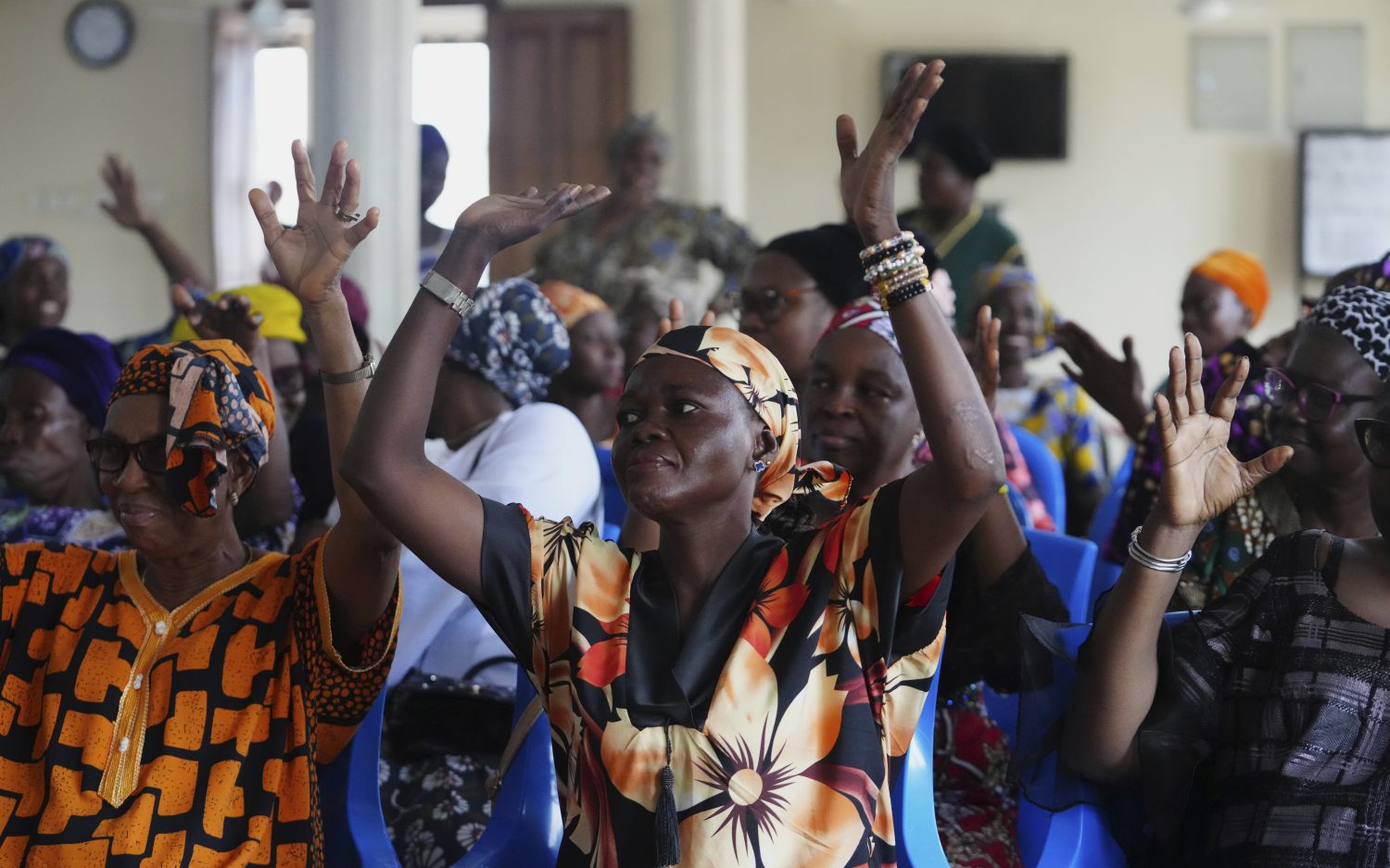An 'assets-based' approach to church benevolence
Acknowledging the gifts, resources, and abilities of a low-income person seeking help
Many pastors, deacons, and secretaries don’t know how to react when individuals walk into their offices and ask the church to help them pay their car repair or electric bill. In Helping Without Hurting in Church Benevolence, Steve Corbett and Brian Fikkert offer a biblical approach and provide a practical guide to walking with low-income people. Here’s one segment. —Marvin Olasky
The moment when . . .
Ben walks through the front door of your church. He approaches the reception desk, explaining that he lives across town and needs help paying his rent. “I’ve been working real hard at two jobs to take care of my kids,” he explains. “But my car broke down this month, and now I can’t pay the rent. Can you help me?”
How should your church respond?
Debbie, a single mother who is a member of your church, stops by to visit your pastor’s office. She has had a string of jobs over the course of the past year, but just cannot seem to keep one. “I know I said that last month would be the last time, Pastor, but I can’t cover my electric bill again this month. I just lost my job because little Emily was sick last week, so I was late to work three days. Can you please help me?”
How should your church respond? …
Assets not just needs
When a person like Ben (or Debbie) walks into your church asking for assistance, what is the first thing that enters your mind? Many of us focus on what Ben is lacking in terms of resources. As a result, we then pursue a “needs-based” approach to working with Ben, focusing on his deficits and needs and assuming that he has little to offer to combat his problems. In this approach, the assumption is that the resources, solutions, and initiative to help Ben will not primarily come from him but from your church. A needs-based approach often exacerbates the very dynamic we need to get out of in poverty alleviation: handing out material resources to people rather than helping them steward and grow their own resources.
In contrast, an “asset-based” approach to walking alongside low-income people starts with the biblical truth that Ben is an image-bearer. Yes, Ben is broken, just as we all are. Yes, maybe Ben is just trying to get the church to give him money he is capable of earning himself. But this brokenness does not negate the fact that Ben retains the image of God and has gifts, resources, and abilities he is called to steward. Indeed, helping Ben become a better steward is one of the key goals of poverty alleviation: seeking to restore people to right relationship to creation. An asset-based approach does not ignore his needs, but it seeks to identify, celebrate, and mobilize his own gifts, abilities, and resources as much as possible to address those needs.
Note that using an asset-based approach does not mean your church should never give resources or other forms of help to Ben, but rather that you should only do so in a way that builds on, not undermines, Ben’s use of his own gifts, abilities, and resources. Unfortunately, because we North Americans are materialistic people and because we tend to think that poverty is fundamentally about a lack of material things, we often provide resources too soon and in too large quantities. And in the process, we undermine Ben’s use of his own gifts, abilities, and resources.
An asset-based approach can help prevent the unhealthy dynamic captured in the equation mentioned earlier. Focusing on the assets God has given to low-income people frames our interactions with them in light of their God-given dignity and responsibility. It affirms that they have gifts they are called to steward, thereby combating their feelings of inferiority and calling them to take responsibility for improving their situation. This approach also fosters an attitude of respect in our hearts for low-income people, countering our sense of superiority and our tendency to feel we need to fix them.
The change cycle
Recall that poverty alleviation is a process in which people, both the materially poor and the materially non-poor, move closer to living in right relationship with God, self, others, and the rest of creation. Hence, poverty alleviation is fundamentally about change. As mentioned earlier, the changes that are needed often involve addressing individual behaviors, abusive or exploitive people, oppressive systems, and demonic forces. We do not want to downplay the latter two causes, and they will be discussed more in later chapters. But for the moment, let’s focus on the first issue. What does it look like for an individual to make the necessary changes in their own behaviors that can help them to emerge from poverty?
Take a moment to reflect on a time when you made significant, positive changes in your own life. What led you to make those changes? Did you ever try to change but fail?
Change does not happen overnight, and making positive behavioral changes is extremely difficult for most people. Indeed, as will be discussed further below, fundamental and lasting change is actually impossible without the saving work of Christ and the power of the Holy Spirit. In addition to this, researchers and practitioners have observed some fairly regular patterns in the way human beings experience change, patterns that can be used to encourage the kind of changes central to the poverty alleviation process.
As pictured above, the context for change is the person’s current life experience. Change begins when something triggers this person to reflect on the current situation and think about a possible future situation they would prefer. This reflection can then lead them to make a decision to take some action they hope will move them into a more desirable future situation. Taking this action will lead them to some new life experience. The cycle needs to repeat itself over and over if people are to continue to make positive changes in their lives.
Many different circumstances can serve as triggers for change, but several common triggers that can lead to a desire to change are:
A recent crisis The burden of the status quo becoming unbearable Encountering a new way of doing or seeing things that could lead to improvementOne of the key roles your church can play in walking with low-income people is to initiate a trigger for change by gently asking probing questions, introducing new ideas, or helping people see a new set of possibilities. This can lead to a spiraling cycle of action and reflection, a “learning as you go” process: walking with people, trying something together; reflecting on the experience, together; deciding to try something additional, together; reflecting again; trying again.
Of course, once a trigger for change causes some reflection, it is not at all automatic that the rest of the cycle will continue. Indeed, a host of obstacles can get in the way of significant change. A major part of the poverty alleviation process is coming alongside low-income individuals to encourage and support them as they remove obstacles in their lives and help them overcome the obstacles they are incapable of removing on their own.
For example, as you and Ben talk about his current financial problem, it might become clear that he needs to think about work differently. So you suggest that he participate in a jobs preparedness program your church sponsors. He decides to give it a try and enrolls in the twelve-week program. As he faithfully attends the classes and attempts to complete the assignments, a member of your church acts as a mentor, helping him with some of the homework, encouraging him, and cheering him on. In the midst of the course, Ben has some financial shortfalls. The mentor lets the church know about Ben’s needs, and the church helps pay a few bills as a way of supporting Ben on his journey. Ben graduates and soon gets a job due, in no small part, to the great references from his mentor and the course instructors.
Receptivity to change and participation
Of course, change is only possible in a low-income person if he or she is willing to change. If Debbie does not believe that change is possible, if she is unwilling to go through the pain of change, or if she does not believe that she is the person who is primarily responsible for making the necessary changes in her life, it will be very difficult to make progress with her. Indeed, one of the most challenging elements of poverty alleviation is identifying those people who are truly ready to change: namely, those who have experienced a trigger for change and are willing to embark on the process of change. Chapter 4 will discuss the use of an “intake form” as a tool to gauge a person’s receptivity to change. Remember: while we have a crucial role to play in the life of a low-income person, we cannot effect change. Rather, our role is to be an encourager of them as they initiate and drive their own change process.
In order for a low-income person to pursue the hard road of making the necessary changes in his or her life, it is profoundly important that they own the course of action from the very beginning. This means that Debbie must see herself as the person who is primarily responsible for making these changes happen. Like most human beings, low-income people generally own plans that they have helped to initiate and to shape more than plans that have been imposed on them.
Hence, poverty alleviation efforts should avoid “blueprint” approaches that impose a predetermined plan on a low-income person with our ideas about what to do and how it should be done. A blueprint approach fails to create the necessary ownership of the change process that is essential if the low-income person is going to initiate and sustain the necessary changes in their life. In addition, a blueprint approach tends to exacerbate the harmful dynamic in which the materially non-poor “play god,” speaking and acting in ways that confirm the sense of inferiority and shame that many low-income people are already feeling.
In contrast, a participatory approach asks Debbie what she believes she should do to improve her life, how she thinks she should do it, and what actions she will take to pursue positive change. This does not mean that you should never speak into Debbie’s life but simply that you act in a way that is consistent with biblical truth. As an image-bearer, Debbie has insights and abilities, and she is called by God to be the primary person who stewards those insights and abilities by using them to initiate and sustain positive changes in her life.
This article is adapted from Helping Without Hurting in Church Benevolence (©2015, by Steve Corbett and Brian Fikkert). Used by permission of Moody Publishers.
An actual newsletter worth subscribing to instead of just a collection of links. —Adam
Sign up to receive The Sift email newsletter each weekday morning for the latest headlines from WORLD’s breaking news team.




Please wait while we load the latest comments...
Comments
Please register, subscribe, or log in to comment on this article.